Do you have a 4' x 4' area? Then you can grow corn. Do you have a 4' x 8' area? Then you can grow twice as much corn. Here's how.
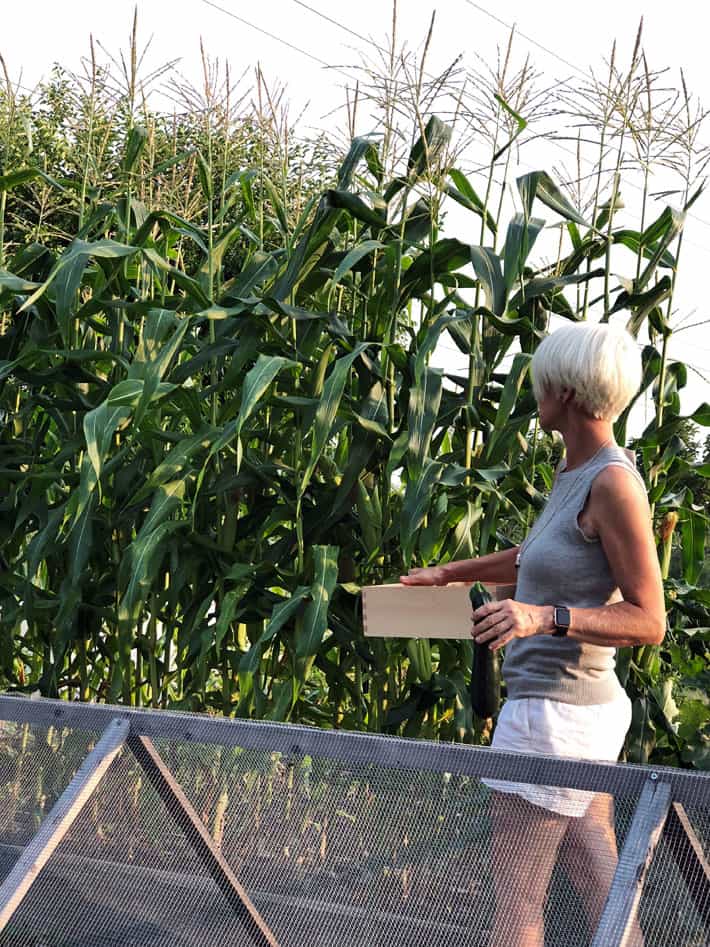
I grow my own corn for the same reason I grow everything else that I eat. It's an environmentally friendly way to avoid crying over the price of things in the grocery store.
Plus as an added bonus I'm never tempted to buy 14 chocolate bars and 3 packages of gum on my way out.
Also my uncertified organic garden is actually 100% organic. Which isn't always the case with certified organic products.
ALSO I can grow the exact variety of corn that I want (Serendipity).
But mainly, I think it's fun to grow things and I like doing it.
Every other advantage is just a bonus.
Let's get you ready to grow some corn.
Table of Contents
1. Planting Corn: Timing & Prep
- Plant corn from seed when it's consistently warm out and all chance of frost is gone. In Zone 6b I plant my corn seed around June 1st.
- Nitrogen is the most important element for corn growth. They use a lot of it.
- Prepare your beds by working in a slow release organic fertilizer, a layer of compost and blood meal (which has a lot of nitrogen).
- Lay black plastic mulch over your growing area. This heats up the soil underneath and keeps it damp. This means you can plant your corn at least a week earlier (because of the heat) and you get improved germination (because the seeds neither dry out, nor rot from excess water).
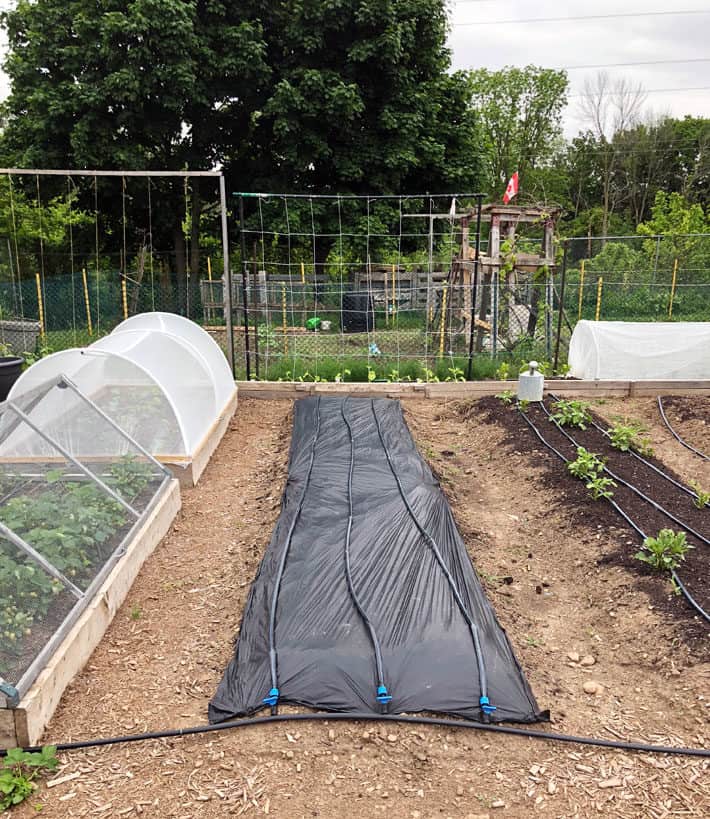
Corn bed warming up pre-planting.
How to Use it
🌽 Organic Slow Release Fertilizer - I use a handful sprinkled on a 4' x 4' bed.
Check your package directions. I use Gaia Green organic 4-4-4 all purpose fertilizer.
🌽 Blood Meal - A 4' x 4' bed needs ⅓ lb blood meal for its 16 square feet
Blood meal is high in nitrogen and works almost immediately. 1 lb blood meal per 50 square feet
Lay the plastic mulch* over the entire bed and secure the sides with rocks or garden staples two weeks before you plan to plant.
*You can also use biodegradable "plastic" mulch or professional grade landscape fabric.
2. Which Variety?
Do you want to eat it, pop it or display it?
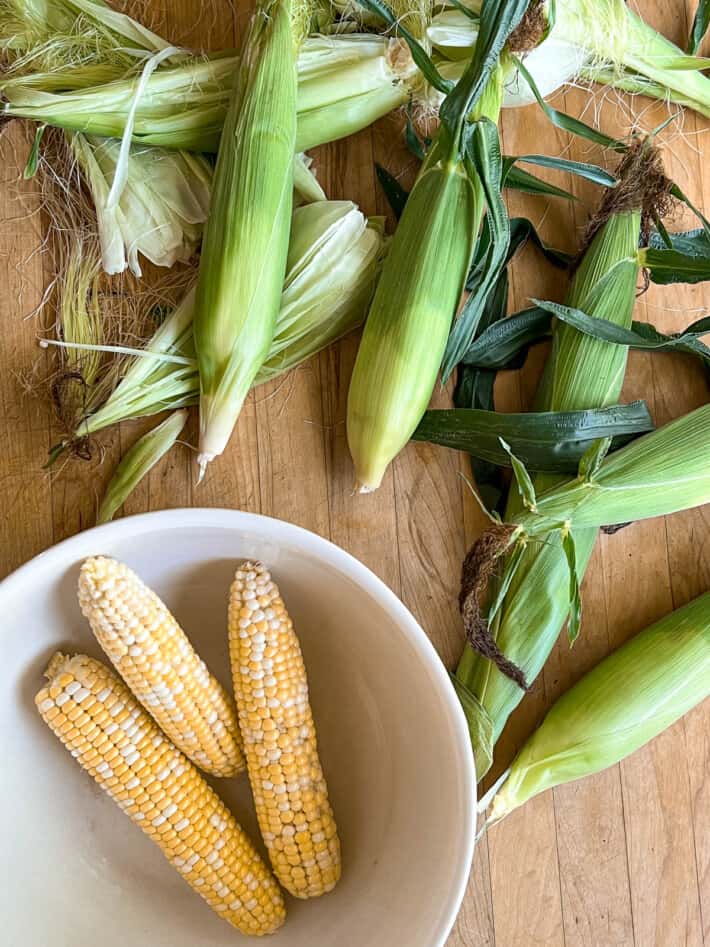
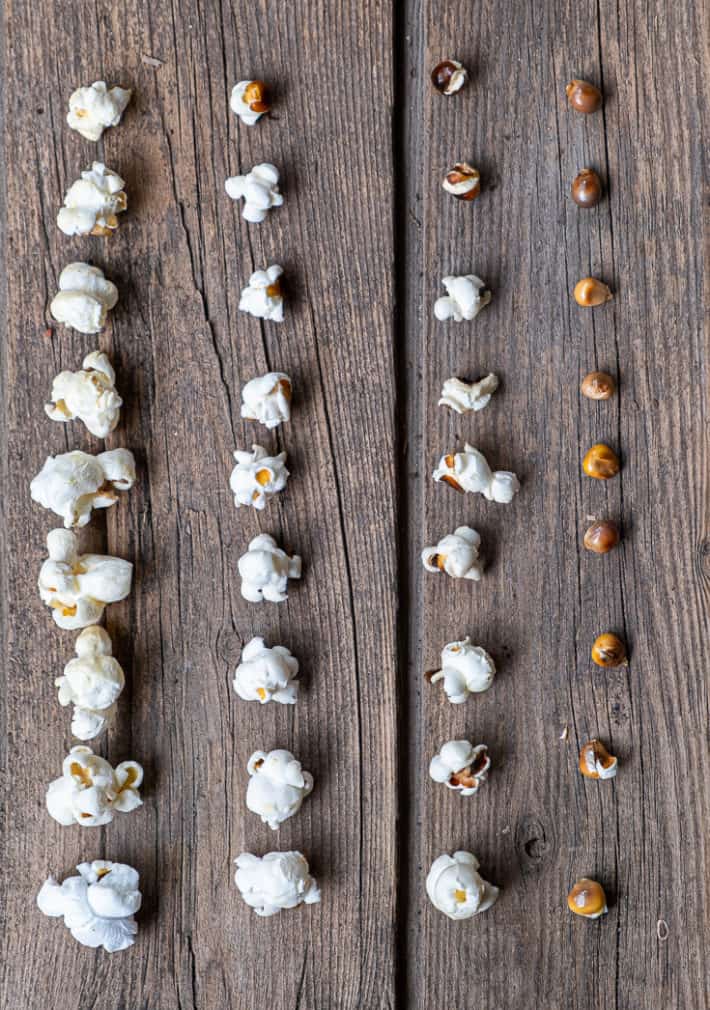
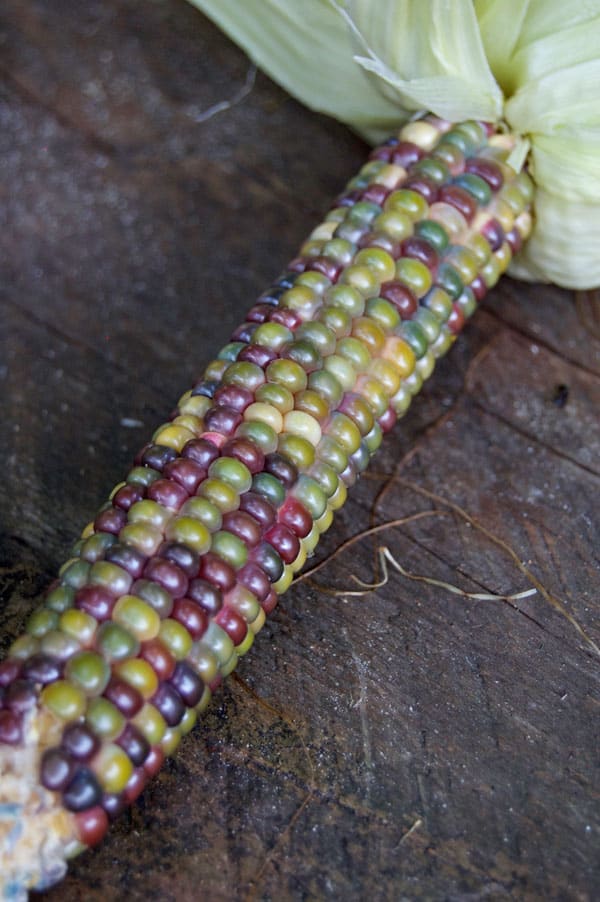
Eating
Choose a variety by the level of sweetness you like in corn, the days until harvest, and the height. The seed packet should have all this information.
Corn Flavours - Corn can be sweet, supersweet or triple sweet. If you like a low level of sweetness and more corn flavour go with a "sweet" corn.
Days to Harvest
If you'd like to harvest as soon as possible grow Peaches & Cream variety. It's always the first available at markets because it's always the first to mature.
My corn choice
I like a good combination of sweet and corn flavour with my favourite variety being Serendipity because of its dependability, taste and low growing height of 6-7'.
Popping
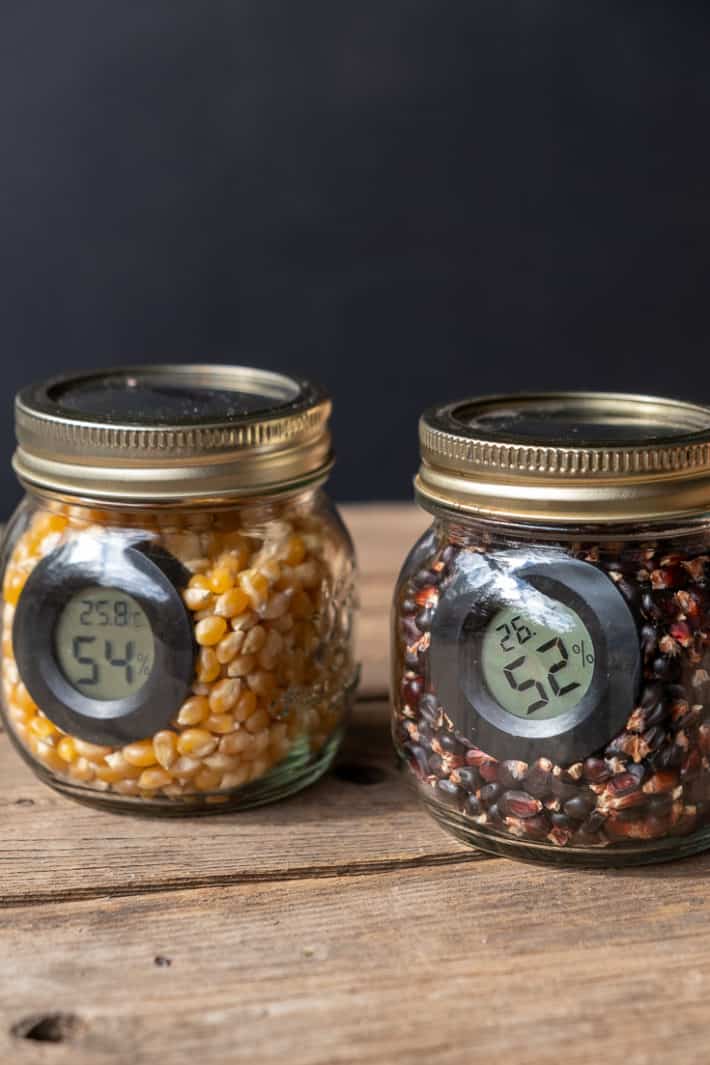
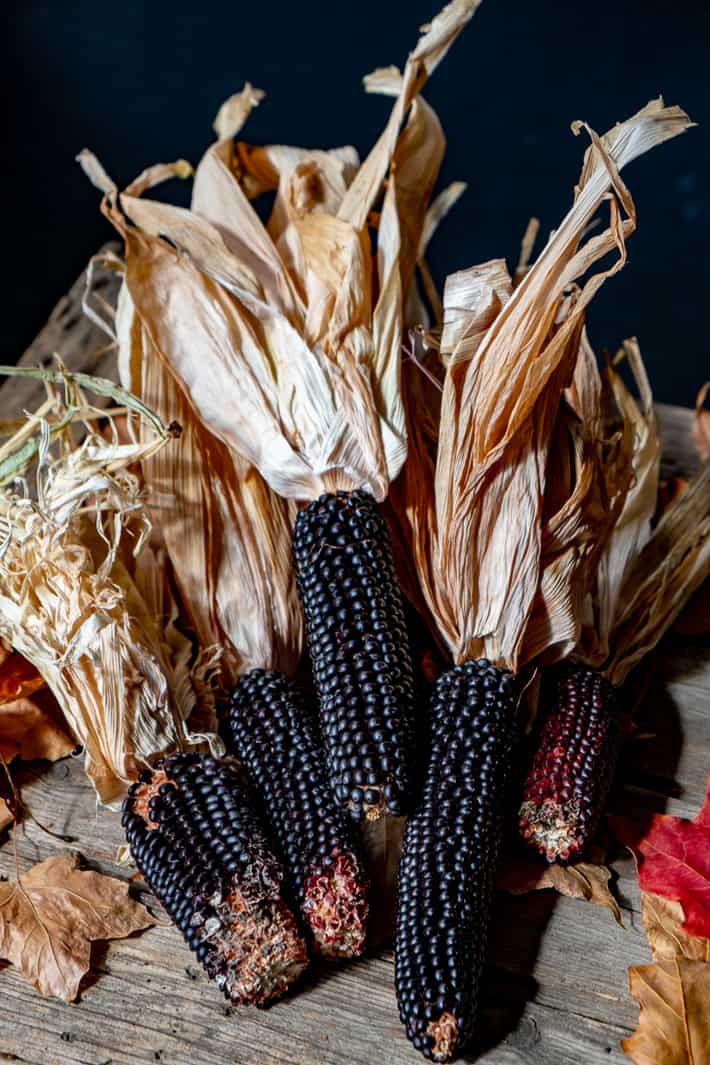
You can grow your own popcorn. I have. That's some Dakota Black popcorn I grew a few years ago. But growing popcorn isn't quite as simple as harvesting & popping it.
** Popcorn kernels need to dry out but still maintain a specific moisture level so that they'll have a big explosive POP when you cook them **
If you're still interested in growing popcorn, all the extra information you need is in this popcorn post.
Ornamental Corn
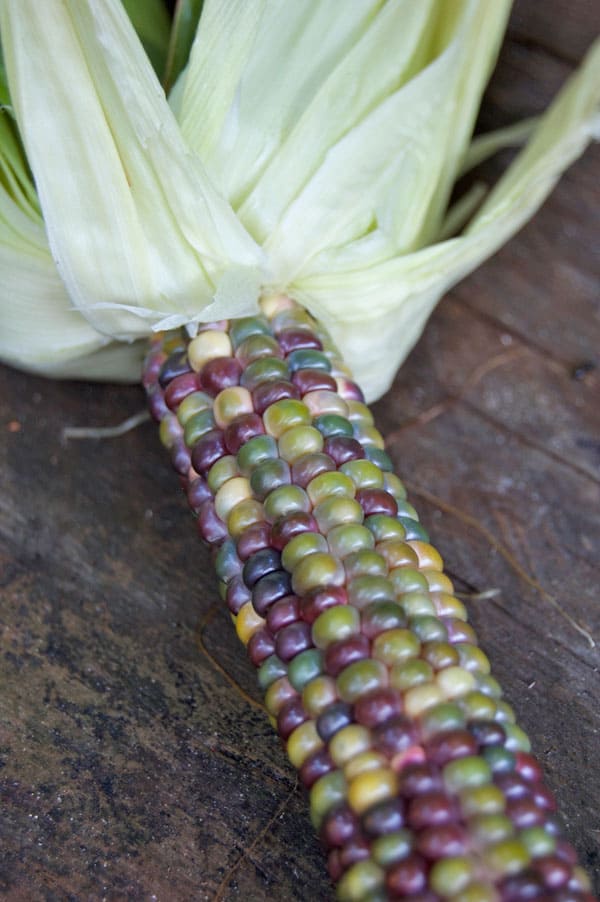
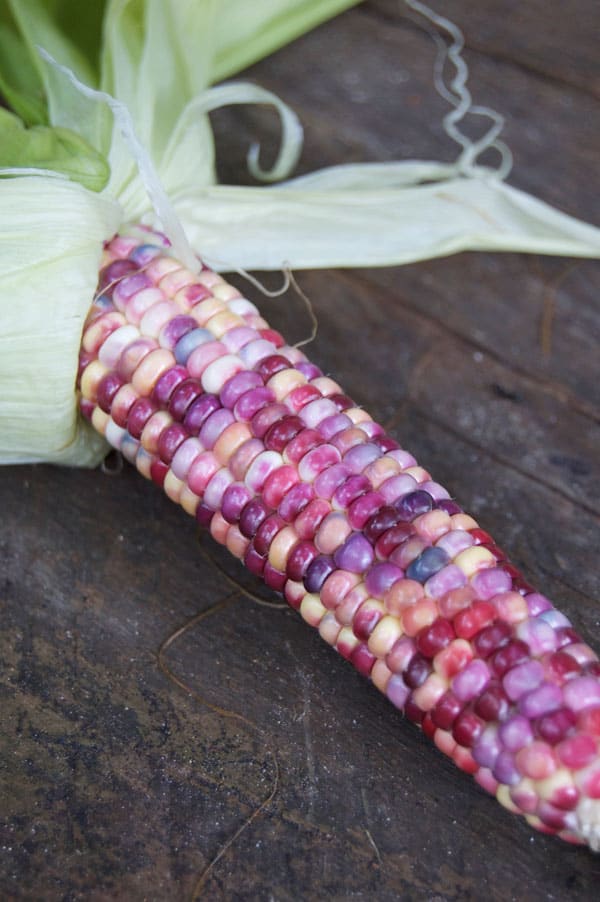
There are a LOT of ornamental corns you can grow, Glass Gem is the one I recommend, since that's the variety of ornamental that I grow.
It's the most beautiful corn there is, can be popped, displayed or ground into really good cornmeal.
If Glass Gem is looking appealing to you and your heart is bursting like a well moisturized popcorn kernel - then read this post with tons of information on Glass Gem.
3. Spacing
Unlike commercial growers that plant in massive rows, as a home grower you'll have the best corn success by block planting.
Plant corn seed every 8 ". Each row of seed in your block should be 12" apart. You can fit 24 corn plants in a 4' x 4' area.
Corn grows in an interesting way. The plant has both male and female parts to it so it can pollinate itself. BUT the success rate of pollination goes way up if each corn plant is surrounded by other corn plants.
Therefore - plant a big square of corn instead of a row.
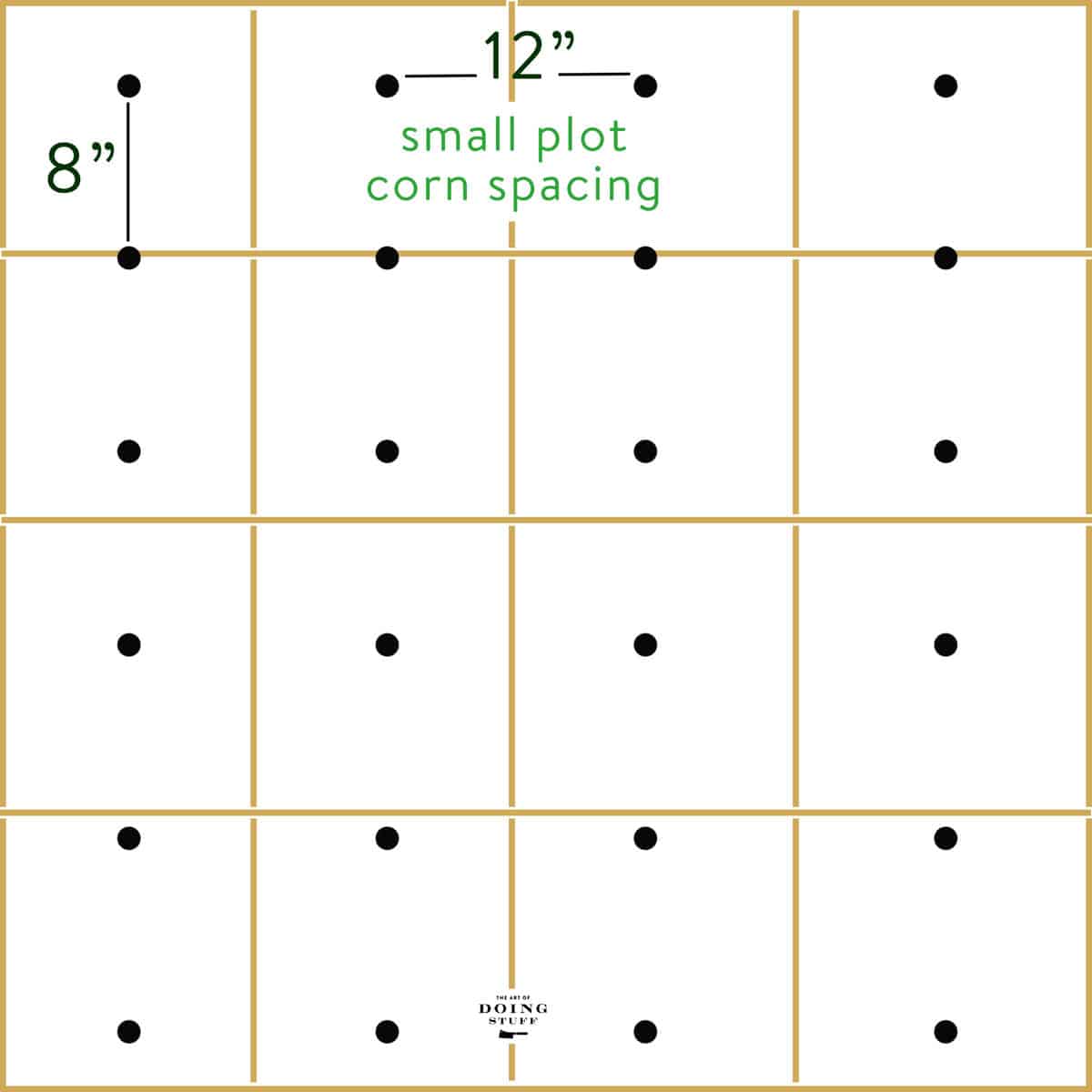
4. Planting
- Remove your plastic mulch and water the soil below if it's especially dry. The soil should be quite damp so the seed germinates but not so wet that the seed will rot.
- Place the plastic back and secure it.
- Push your finger through the plastic every 8".
- Using the tip of your finger push 2 corn seeds 1.5" into the soil. Planting 2 kernels is your corn safety net. If both germinate keep the healthiest/biggest and remove the other one.
PLANTING TIP: Push the corn seed into the soil until you reach your second knuckle. This will be about the right depth for the seed.

5. Watering, Fertilizing, and Mulching
- Water well at least twice a week. Corn needs water (as does every vegetable ever grown).
- You have pre-fertilized with compost, slow release fertilizer and blood meal so you're good to go.
- Your plastic mulch will conserve moisture, suppress weeds and regulate the soil temperature
6. Pests & Disease
Corn Earworms
The main corn pest you'll encounter is corn earworm. The moth of the earworm lays an egg on the newly emerged corn silk, the egg hatches, the worm emerges and then it starts eating the silk. Then it moves onto the corn at the tip of the ear.
They aren't likely to eat the whole cob, but they'll damage the cob creating opportunity for mould and disease.
Would you like to save this stuff?
SOLUTIONS:
1. Spray the corn tassels and silks with Spinosad a naturally found soil bacterium like BT.
or
2. Using an dropper, squeeze 5 drops of vegetable oil* into the emerging silks. Do NOT pry apart the top of the husks to apply.
Most people recommend mineral oil and you can use that, but vegetable oil has been proven to be more effective in some studies. Either/or will be fine.
Raccoons
Raccoons will mow down an entire corn patch in one night. Seriously. It has happened to me. One year I got a few cobs and then went up the next day to harvest the rest and all that was left of my corn patch was a flattened mess of stalks. It looked like a crop circle.
SOLUTION:
A small, portable, battery operated electric fence. My tutorial shows you *exactly* what you need to buy and *exactly* how to set it up.
Corn Smut
The only disease I've ever had to battle with my corn is corn smut. Yes. Corn. Smut.
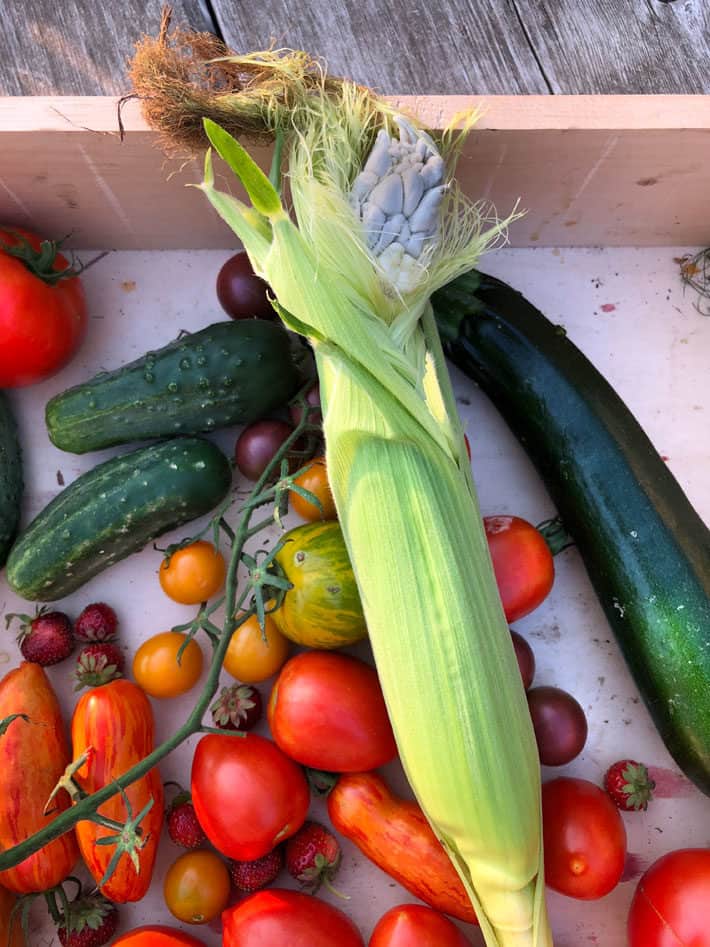
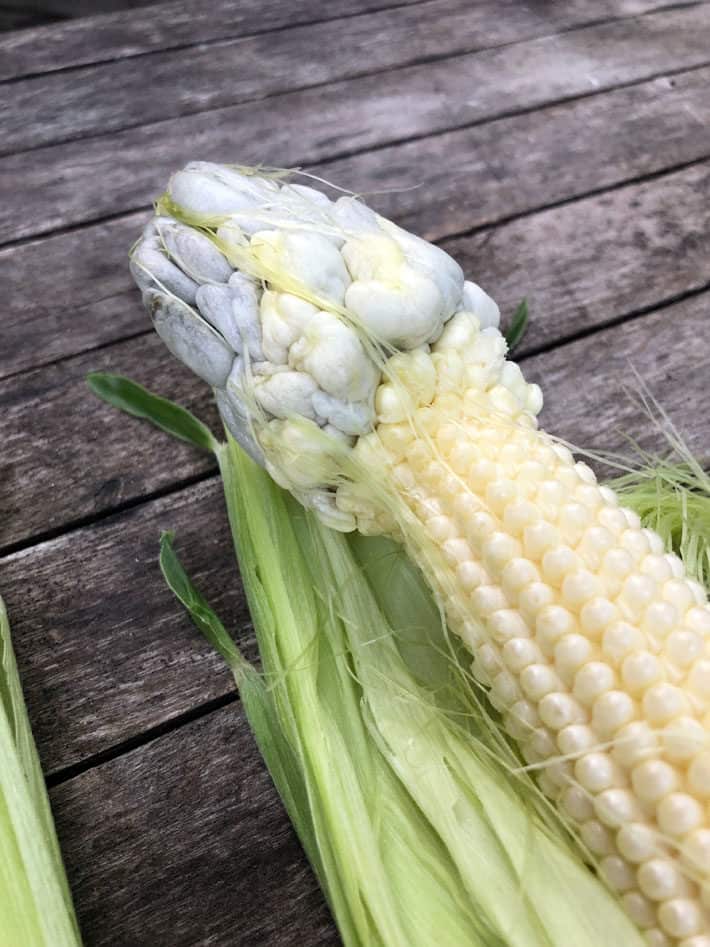
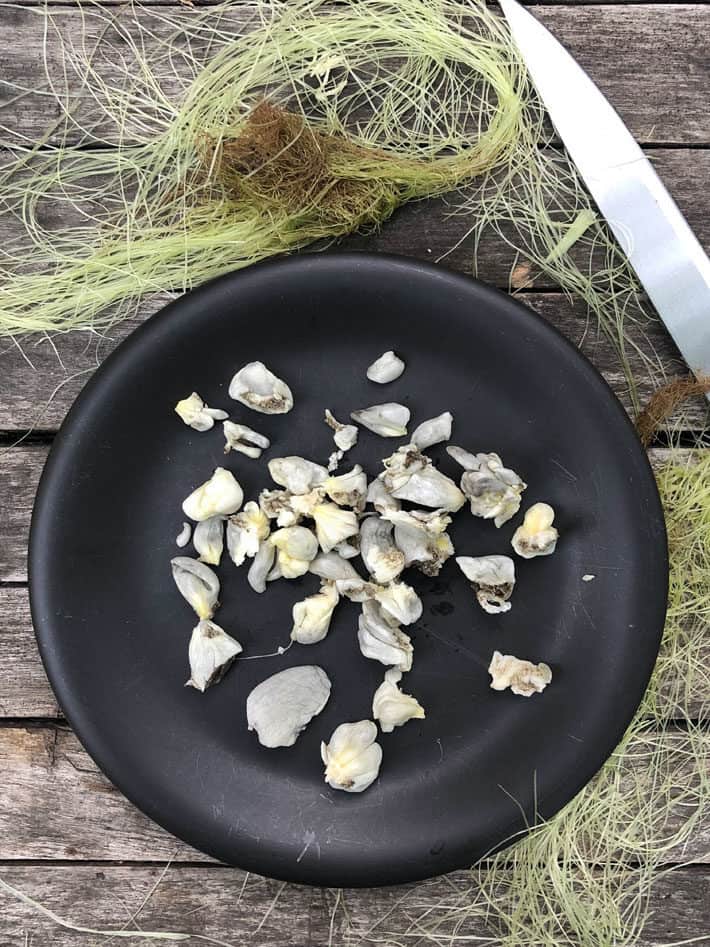
Corn smut is a fungus. Its spores enter the corn at the top of the ear where the husks come together.
The best way to limit corn smut is to never, ever peel back the husk to try to take a look at your corn while it's growing. The second you pull back the husk even a little to take a peek you've allowed a place of entry for the fungus.
However, if you DO get corn smut here's the good news. It's a delicacy that a lot of chefs love to cook with if they can get their hands on it. Yes, I have an entire post dedicated to corn smut with an example of how to cook it.
7. Pollination
Pollination of corn takes place because of two components: the tassels and the silks.
The pollen from the tassels at the top of the corn plant fertilizes the silk strands that emerge from the ears of corn below.
FUN FACT
🌽 Each strand of silk corresponds to a single kernel of corn. 🌽
If all of the silks are pollinated, every kernel will develop. If any silk is NOT pollinated, there will be a space on the cob where that kernel should have been.
How to Maximize Pollination
- Plant in blocks (like you're doing).
- Brush your hand along the stalks or tap them to help release the pollen if the wind isn't doing its job.
8. Harvesting & Storing
HARVESTING
Signs your corn is ready to harvest:
- Corn is ready to harvest once the ears are big and fat when you wrap your hand around them.
- The silks have turned brown and feel a bit sticky.
- If you pull back a husk and pierce a kernel with your fingernail the inside will be juicy and milky.
Sugars and Starches
Once you take corn off of the plant the sugars in it immediately start converting to starches. That means it gets less and less sweet, and more and more tough every minute, hour, day that passes.
So I strongly recommend you pick your corn just before you're going to cook it. You don't even need to cook fresh picked corn - you just need to warm it up.
I'm going to tell you how to store corn but only do this if you have no other option. You grew fresh corn for a reason. TO EAT IT FRESH.
STORING
In the fridge: Store your fresh corn in the fridge or somewhere cool, keep the husks and silks on the corn. Do not put it in a plastic bag or the crisper. Use within 3 days.
In the freezer: You can freeze your corn on the cob to use in the middle of winter. It's surprisingly good. Learn how to properly freeze corn here.
9. Cooking with Corn
If you're cooking within hours of picking it, just husk it then drop it into boiling water for a minute or two to warm it up then dip it in a jar of melted butter.
If your corn is a few days old, make Indian Street Corn; grilled corn with Indian spices (recipe below).
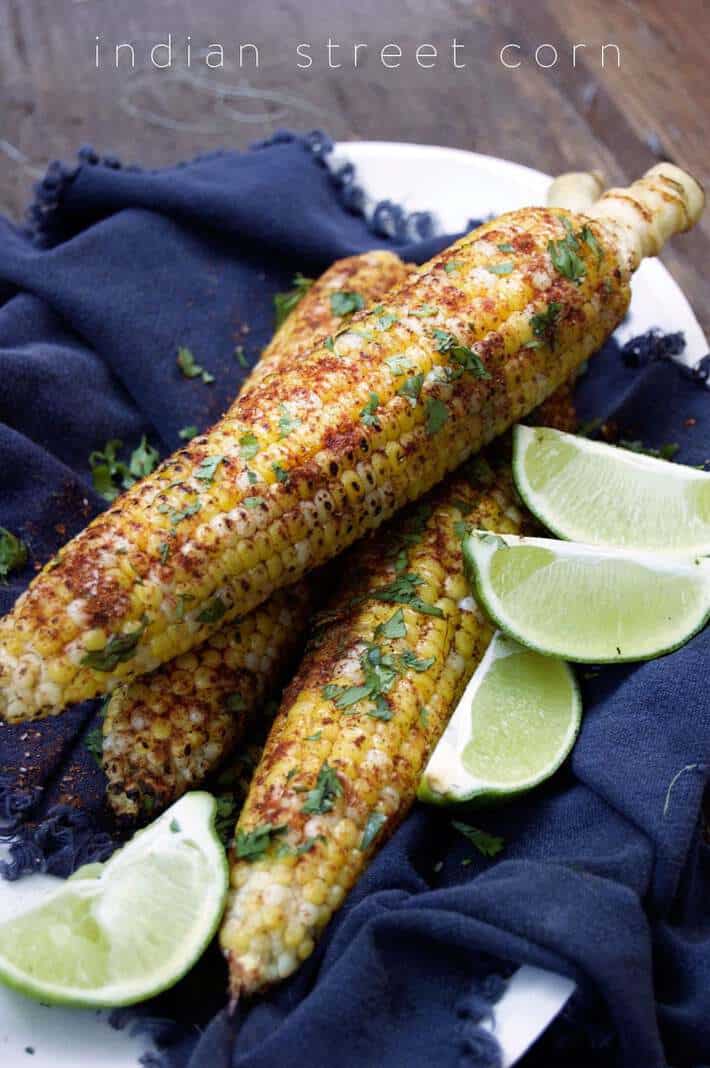
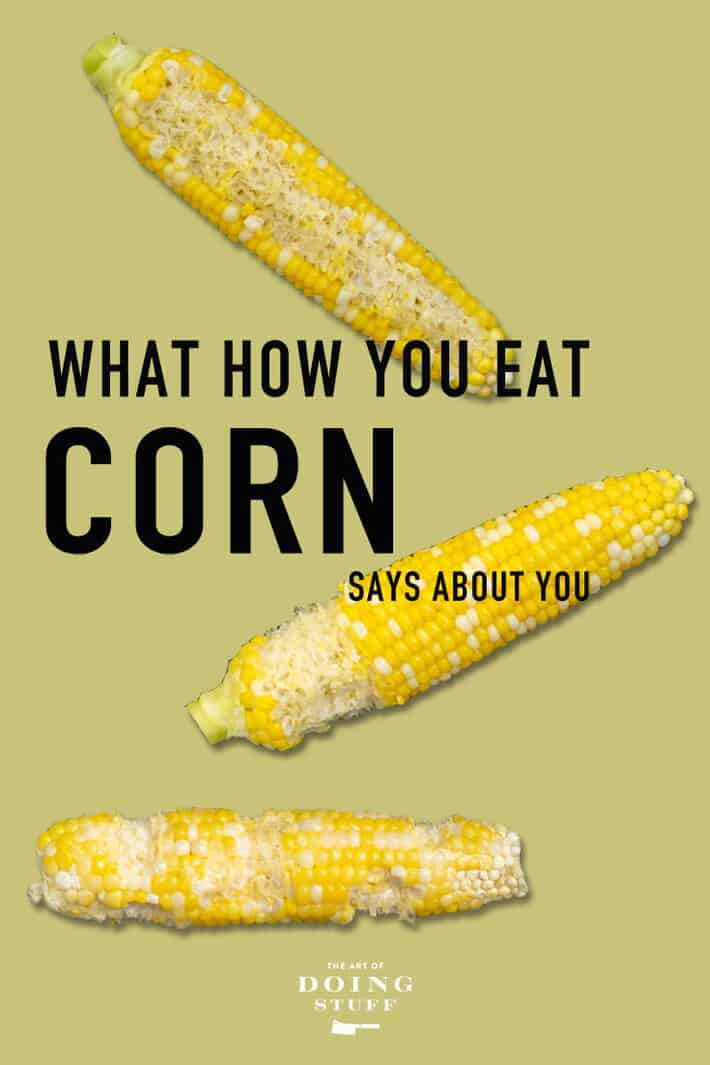
Make yourself some Indian Street corn with cobs that are more than a day or two old. It is DELICIOUS.
Do you eat your corn like a psychopath? Find out.
Print the card below and keep it with your seeds or file it for a quick reference later.
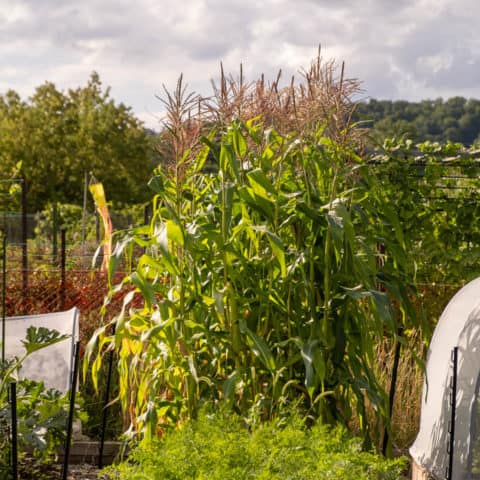
How to Grow Corn (Quick Guide)
How to grow corn - Quick Guide
Instructions
- Prep bed with compost, slow release organic fertilizer and 1 lb of blood meal per 50 square feet.
- Cover bed with black plastic to warm up the soil 2 weeks before planting.
- When weather is consistently warm, plant seeds by poking a hole in the plastic and pushing a seed in the soil about 1.5" deep. (2nd knuckle of pointing finger)
- Water deeply at least 2 times a week.
- Harvest when corn feels large under husk, silks are brown and slightly sticky, and kernels release a milky juice when you break them.
Notes
Eat corn immediately for best quality. Store for up to 3 days in the fridge, unhusked,
I don't grow huge fields of corn. I grow a 3.5' x 8' area usually. So when I say you can grow corn in a small space I'm speaking from experience.

Now get out there and grow some edible ears.
If you need some inspiration take a quick tour through last year's August vegetable garden.
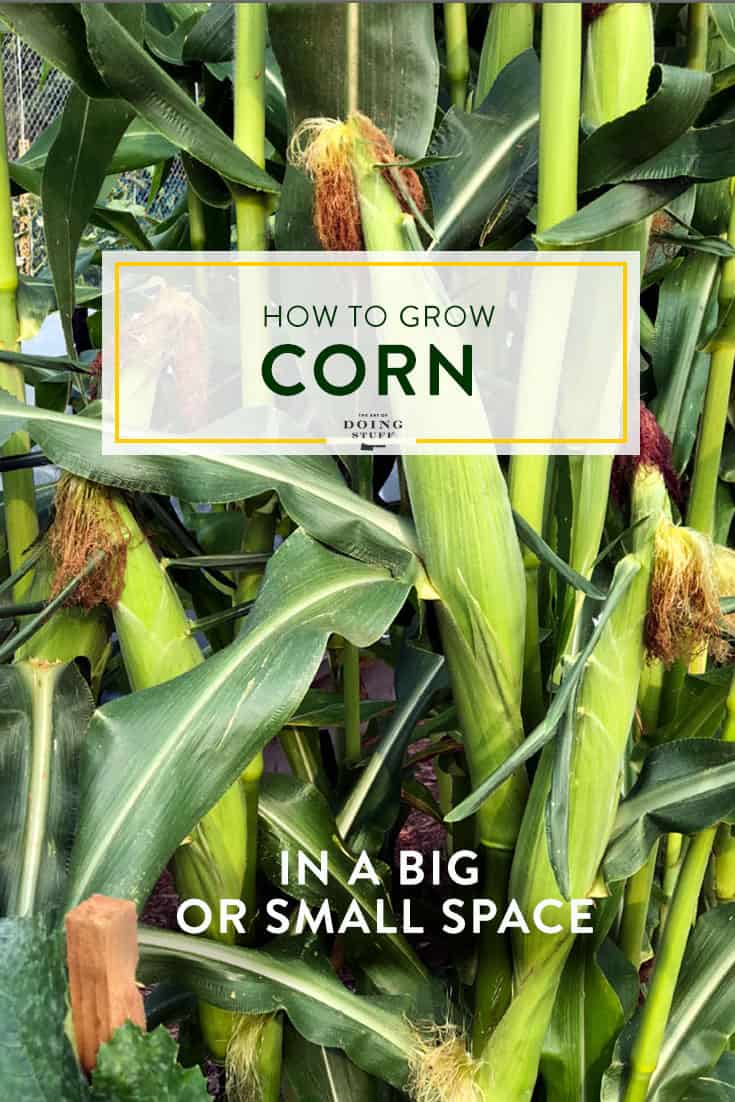


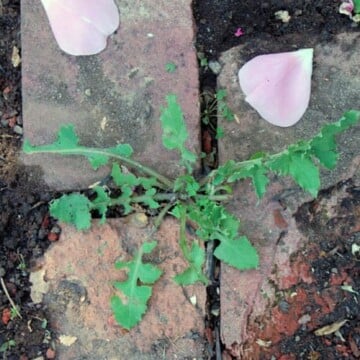
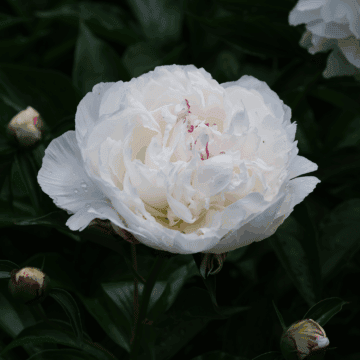

Kat
Misread:
"2. Which Variety?
Do you want to eat it, poop it or display it?"
Umm... 😅
Karen
LOL!~ karen
Marilyn Majalca
Karen, is that drip irrigation that runs on top of your black plastic? Does it really get in through the jokes you made to plant seed?
Karen
Hi Marilyn. The drip irrigation runs underneath the landscape cloth. If you're watering from above, then once the seedlings emerge, cut the hole around them larger. 4 or 5 inches across. ~ karen!
Mary W
You missed the most important thing - link to the electric fence. How do you know when it is perfectly ripe - you don't but the raccoons do and they don't tell you - they just wait until that Day of Perfection and eat it ALL during the night.
Karen
Very true, lol. And yes, I absolutely should be linking to the electric fence post. I'm happy it's working for you! ~ karen
Linda
Very useful post. The last time I grew corn, (a very long time ago) every cob was pulled of by raccoons just before they were ripe enough to eat. You obviously don't have that problem. Any suggestions, besides an electric fence?
Karen
Hi Linda! There's no other deterrent for raccoons that I know of or have experienced. Some people recommend putting a floppy fence around the corn or the vegetable garden. Something that a raccoon can't climb because it's too flimsy. ~ karen!
Jane
You forgot to put squirrels under Pests. I used to plant corn years ago. They were so good just picked and I would even eat them raw in the garden. That's until the squirrels discovered them. If they were to behave and eat an ear or two, it would be okay with me. But no! They had to pull the stalks down, take a bite or two out of each ear, then leave everything to rot. I even tried growing sunflowers to distract them. No go! I gave up after a couple of seasons of no harvest.
Jennifer
So here I am, once again just minding my own business, about to go to sleep. Then, You Know Who (Karen) has to go and post something interesting. Again. So instead of sleeping-I have a meeting in the morning!-I’m looking up Glass Gem corn, how to save seeds from corn, and feeling the need to share this with all of you not sleeping either. Next up: reading the post on growing wheat. Ugh!
Karen
Out of respect for you, your sleep and your meetings, Jennifer, I will only post about math from now on. ~ karen!
Randy P
I refuse to tell you how old I was (but I was already out of the service and married) when I learned that 'Ornamental' corn was not regular corn that was painted as a homespun craft. It IS always interesting and educational to learn how the fresh produce I get at the grocery store got there in the first place.